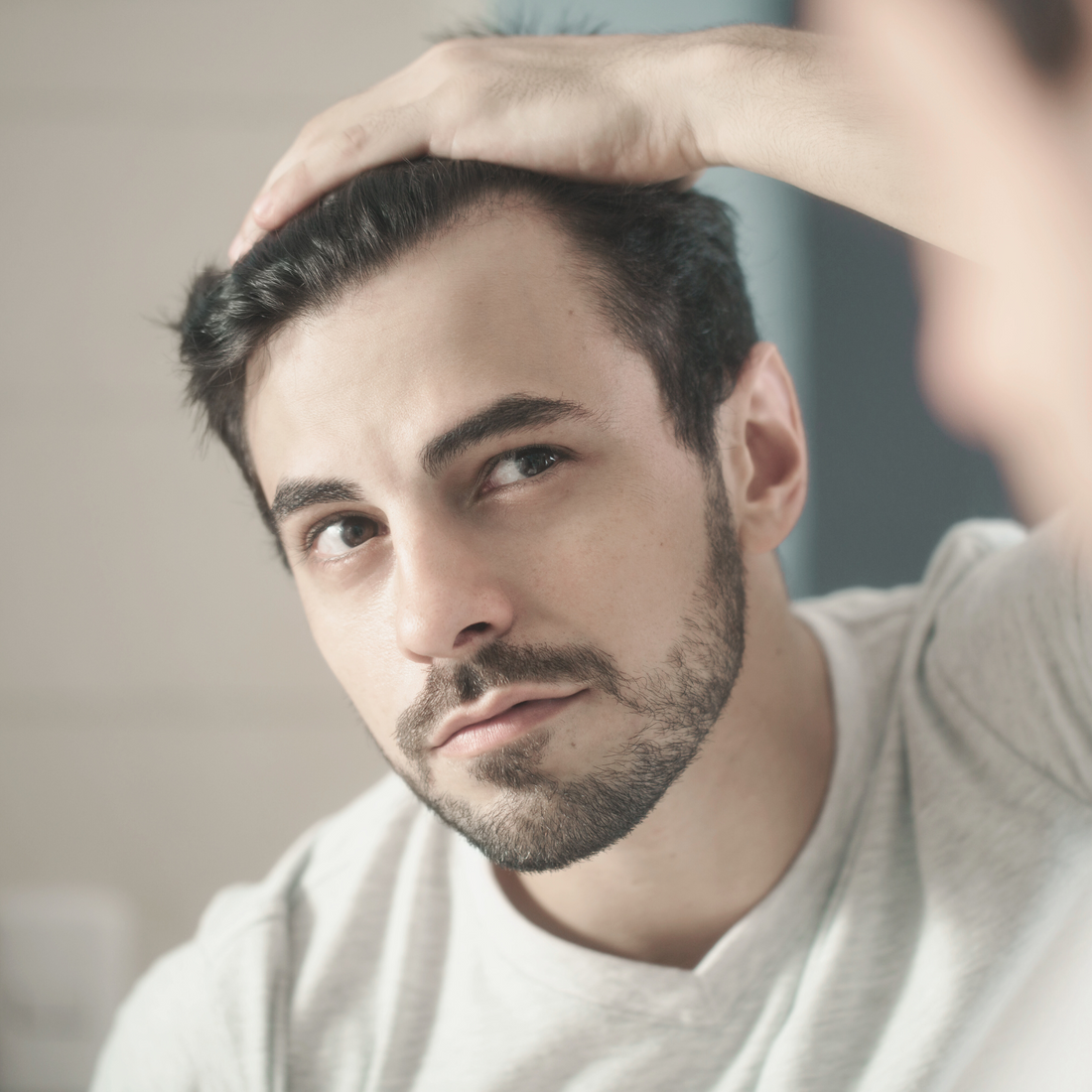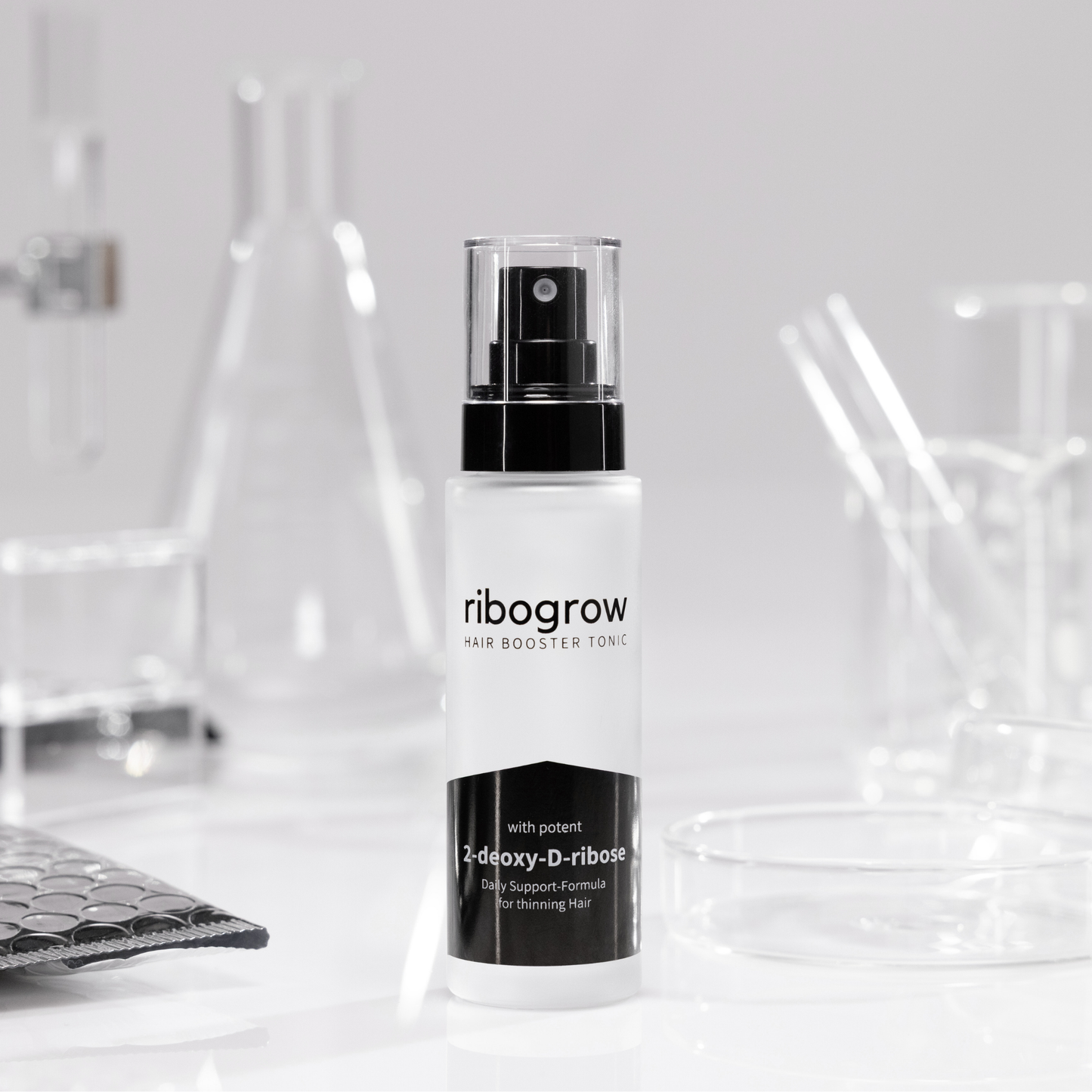
Hair Loss Treatment Comparison: How 2-deoxy-D-ribose compares to Minoxidil, Finasteride, Caffeine and Herbal Ingredients
Share
The market for hair loss remedies is large. From minoxidil to finasteride to caffeinated shampoos and herbal ingredients - there are many approaches to combating hair loss. But how do they differ? And how does 2-deoxy-D-ribose (2DDR) compare? In this article, we explain what 2DDR is, how it works and how it differs from other common hair loss products.
Minoxidil:
Minoxidil is one of the most effective remedies for hair loss. Like 2-deoxy-D-ribose, it directly expands the blood vessels in the scalp, which stimulates the hair roots. This improves blood circulation in the scalp, which can stimulate hair growth. Minoxidil is usually applied topically, i.e. on the skin. However, minoxidil is often associated with side effects such as frequent skin irritation, itching, headaches and, in rare cases, systemic side effects such as heart palpitations or blood pressure problems. In contrast, 2-deoxy-D-ribose works more naturally by supporting the body's own processes and thus revitalizing the hair follicles without any known side effects.
Finasteride:
Finasteride is another effective and common remedy for hair loss. It is usually ingested in pill form. In higher concentrations, it is used to treat and control benign enlargement of the prostate. Finasteride acts directly on the enzymatic processes in the body. It blocks the enzyme 5-alpha reductase, which is responsible for the conversion of testosterone into dihydrotestosterone (DHT). DHT is a hormone that is associated with hereditary hair loss (androgenetic alopecia). By reducing the formation of DHT, finasteride can slow hair loss or postpone it to later stages of life. However, finasteride is also known to have numerous side effects, including a reduction in libido, erectile dysfunction and other hormonal problems. 2DDR, on the other hand, does not affect the body's hormonal balance, but works specifically at the cellular level through external application by improving the energy supply and blood flow to the hair follicles.
Caffeine products:
Products containing caffeine, such as shampoos or tonics, can dilate the blood vessels in the scalp, which can also improve blood flow. Better blood circulation ensures that the hair roots receive more nutrients and oxygen. The main effect of products containing caffeine is that they prolong the hair growth phase, which can temporarily lead to thicker and stronger hair. Caffeine products seem to have some effect, especially in early, hereditary hair loss. In advanced stages of hair loss, where the hair follicles are severely damaged, the effectiveness of caffeine is limited.
Herbal active ingredients:
Other products rely on herbal ingredients or minerals such as millet extract, biotin and zinc to promote hair growth. These nutrients are intended to improve the hair structure and strengthen the hair follicles. Herbal ingredients do not cause any harm - as long as they are tolerated by the user, but one should not expect great success. They can only counteract hereditary hair loss to a limited extent.
Summary: Why is 2-deoxy-D-ribose a good option for hair loss?
2-deoxy-D-ribose offers a natural and well-tolerated alternative to conventional active ingredients against hair loss such as minoxidil, finasteride, caffeine or herbal remedies. While many of these agents either have a hormonal effect or can cause side effects, 2DDR focuses on naturally improving blood supply and cell regeneration. By specifically strengthening the hair follicles and extending the growth phase, 2DDR can help to effectively combat hair loss and promote hair growth in a natural way.



















